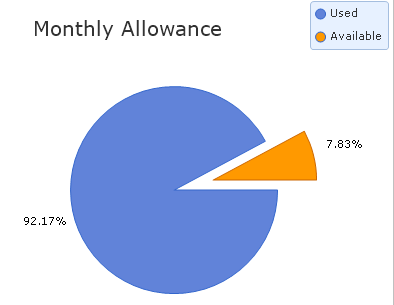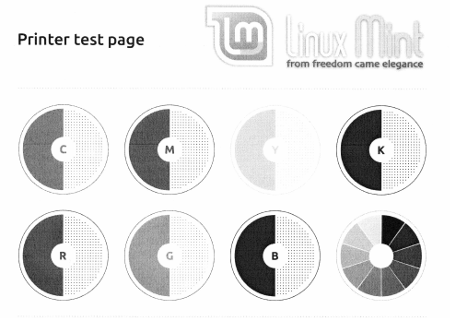2015 — 27 February: Friday
Although I'm aware of the domestic relationship philosophy / advice that you should "never let the sun go down on an argument" Christa and I simply didn't 'do' arguments.1 Well, not for the first 33 years. Since her forced detention in another multiverse, however, I've occasionally found myself muttering things like "Why on earth did you keep them there? That's the last place I'd look!" when searching out some vital domestic item I obviously didn't use very often. (The iron languishes unswitched-on for over seven years now. But at least I think I still know where to find it. I just don't know why I'd want it.)
How difficult...
... it can be when an application programmer chooses not to include a feature or facility that a hapless user (naming no names) naïvely thought would be so obviously necessary. This, based on his having used it in very similar function software on both Windows and Linux (and even OS X during its brief availability in Technology Towers a while back) for, oh, I don't know. Say the last two decades or more. Grrr.
Well, that said user (naming no names) — having poked and prodded every available GUI-based control he could find and scoured the laughably terse end user documentation — went to his bed in a distinct huff. This is not in any way a deficiency of Linux, let me quickly add. But there are a couple of programmers somewhere I might wish to exchange mild words with in the Linux graphics application software world. While introducing them to the concept of a "pixel" as a useful unit of size. Particular when prepping graphics for the web. Or pondering the utility of assembling an image part by part rather than one image at a time, and layer by layer. Grrr.
To clarify, for the sake of a reader who's already pointed me to a bit of GIMP tutorial I read last night:
With the GIMP, the problem was that of layers. And the blasted one image at a time way of working. I wanted to place two scanned images side by side, lock them together, and scale the result using pixels. Couldn't see where I could do all that. Then, when I had the bright idea of importing the images into LibreOffice Impression, that's when I discovered that pixels were an alien concept.
Elderly pooch; new tricks.
I clearly need...
... a bigger cup of tea. Meanwhile (though I've never actually played 'PacMan') does this chap look familiar?

I probably should just cough up the extra monthly fee2 and go uncapped. [Pause] And there's been a 10-minute drop in the average daily TV-watching time of an adult UK subject... to 3 hours 44 minutes. Good grief! I can clock up that much in, erm, as little as 224 minutes (give or take). Tablets and mobiles accrue a mere 3 minutes/day on average. Not mine, it doesn't. I make my Android SHIELD work for a living.
Reading...
... the detailed description of the tasty (and relatively quiet) new NVIDIA NVS 510 graphics card, it was interesting to note that 2GB of memory is clearly deemed sufficient for driving four physical 4K displays simultaneously (for non-gaming purposes, at least), so I shall stop worrying about the 1GB that I have in my own card for my single such display. Although I do wonder vaguely where Linux keeps those six virtual desktops that I must learn to call "workspaces". I assume they're paged in and out somewhere, somehow.
Nicely put
I liked the bit about "looking over the shoulder of someone whose browser has a thousand and one tabs open" — I know someone whose Pale Moon browser looks like that. Source and snippet:
Authors love writing short stories. Publishers ... hate publishing them. So the credits in the back of Trigger Warning make a moving read. The list of occasions and invitations to which Gaiman responded with a story is a map of the tiny fissures in the concrete of commerce,
through which these flowers have forced their way into the light...
Trigger Warning is full of brilliant borrowings from stories that I'm guessing Gaiman first encountered in the Armada books of ghost stories (they were numbered one to umpteen and could just as well have been called NOW That's What I Call Gothic!), or the Alfred
Hitchcock Presents ... anthologies, or the folk tales on Jackanory and Tales from Europe.
I keep being told...
... that I, and my fellow tax payers, now own significant portions of various UK banks that have been bailed out. (Even as those banks continue to set aside hundreds of millions of pounds for PPI misbehaviour, foreign exchange rigging, money laundering, secret bank accounts offshore, and all sorts of dubious-sounding stuff that I don't really want one of "my" banks indulging in.) Now I learn the boss of Lloyds has just picked up an £11,500,000 pay deal as his share of the £30,000,000 of bonus payments to his 11-person management team.
My new...
... HP all-in-one printer / scanner toy has just turned up. Excellent. Something new to play with. I like that. Perhaps I can print out an angry letter to Lloyds on it?
With my weekend food needs safely stowed away in the fridge, I can now enjoy this nice story. (Warning: it mentions mainframes.)
I know you shouldn't mix...
... business with pleasure but, while munching my delicious chicken salad, I've also been reading the "troubleshoot.txt" file which is, so far, about all the meaningful output I've managed to get the new printer to cough up. Don't get me wrong. It prints a test page beautifully, and scans the printed test page, photo-copying it beautifully. But it only does this manually. I also had to cannibalise the ancient Type 'A' USB lead from its displaced predecessor, too. How was I supposed to know that the blue dotted line drawn neatly around that cable in the Parts Supplied In The Box list means "Supply Your Own Cable"?
With it plumbed in and powered on it happily tells me all about itself and its settings. It seem to be nicely-configured and known to the HPLIP and/or CUPS services. It's clearly visible to, for example, my web browser. But something pretty basic (and, I hope, simple) is currently awry. I got, at various points, a connection error message. Or a "printer server not started" message. Or a "print job stopped" message. My attempts to configure through the Linux GUI seem to offer potential control over its entire capability, scanning included.
Don't get me started on the discrepancies between the user "manual" printed in China, the US HP website link it directs you to for Linux printer drivers, and what you actually find there after you fight through the web thicket and "Page not found" errors. (An opportunity to sign up for a Red Hat Enterprise or Suse support contract!)
Not a lot of help. Obviously, I need further tea, so I shall now declare this burst of printer activity at an end, and adjourn to Roger & Eileen for tea and sympathy. And a biccie. TTFN.
A line from "troubleshoot.txt"...
... and the release notes here confirm support for my new toy in Linux Mint 17. Following the troubleshooting advice I checked the precise details for my MFP125a. They assert my printer is both fully supported (printing and scanning) and recommended for use under Linux. (Phew!) Finally, downloading and installing the proprietary HPLIP binary plug-in should sort me out. We shall see, after my evening meal. All this research leaves a chap starving...
Well, that was quite informative, but also a little disappointing. I ran:
hp-check -t
When that had found and identified about a dozen errors and dependencies it offered up:
hp-doctor
Running that revealed that Linux Mint17.1 is either deprecated or not yet supported. It still offered me the chance to go ahead and let it run through what it could find and install by way of missing or incompatible code. When it had finished I re-ran the first check and got a clean bill of health. So I re-tried, but the good ol' "Print test page" still just hangs, though without any error messages. However a simple disconnect / re-connect of the printer and, as you can now see...

... all is both printing sweetness and (from within the GIMP) scanning light! I think that merits a celebratory cuppa. And I may even repeat the exercise on my network colour printer (which Linux knows nothing about at the moment!)
Meanwhile...
... I've been looking forward to watching this:

My first colour scan made on the new toy.